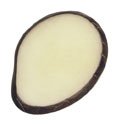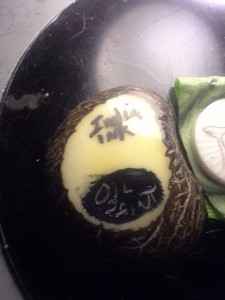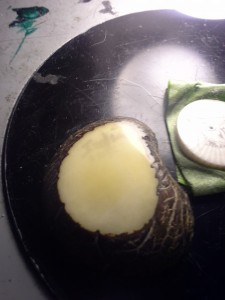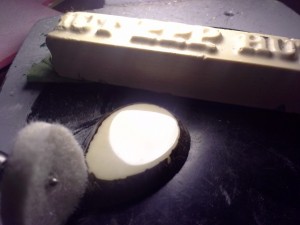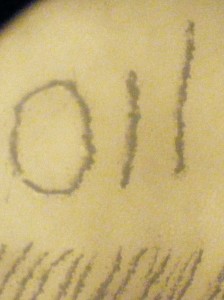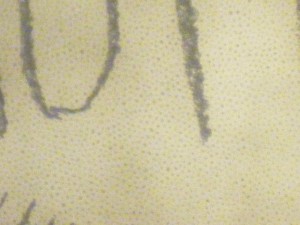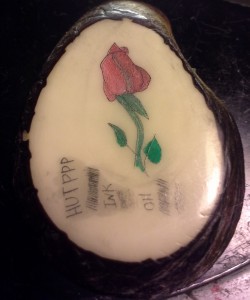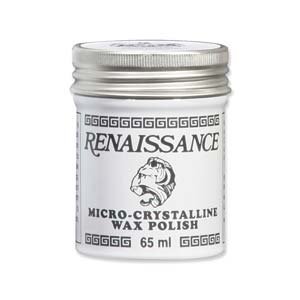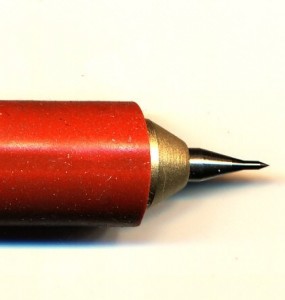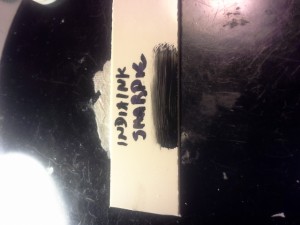
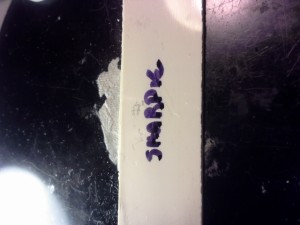
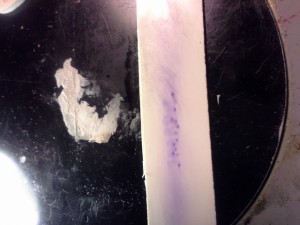
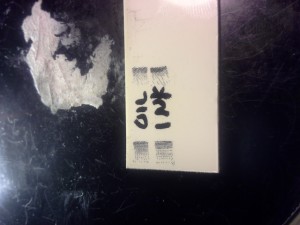
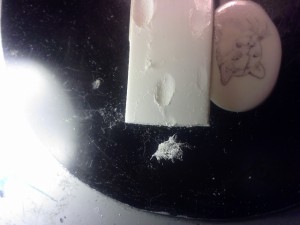
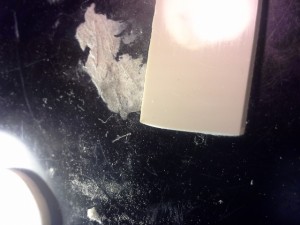
This is an excerpt from the Scrimshaw.com newsletter. You can subscribe for free and receive updates in your mailbox before they reach the website along with more information and news about scrimshaw and special sales. Look to the right (or below if you’re on a smartphone) and put in your email address to subscribe.
Pyralin is the name of a plastic created in the late 1800’s based on nitrocellulose. Nitrocellulose, also known as celluloid (see scrimshaw.com “ivory boom“), was one of the most extensively used plastics of the time. DuPont had bought the Arlington Company and used the material to replace ivory in just about every conceivable accessory of the time including combs, mirror backs, shoe horns, other personal grooming aids and beyond.
It came in a variety of colors though it was most notably used to replace ivory, so the white/cream color is what is most prevalent in the antique shops.
Pyralin was also used in the manufacture of pens, Mah Jong sets, fishing lures,
Antique pyralin commands a high price in most places, especially if it is in excellent condition. Modern pyralin is more stable, but will burn completely if it comes in contact with an open flame, burning faster than acrylic (note: most plastics will burn unless there is a flame-retardant mixed in with it).
Pyralin (at least the formulation I received) has the classic smell of camphor when it’s sanded or heated. Anyone who was in a piano store in the 1960’s or ’70’s may remember the smell (or the taste if you were young enough to still be teething and decided to gnaw on the keys).
Hardness
The material is quite flexible, and is softer than acrylic, corian and horn, but it is quite resilient.
Cutting
Using a plastic cutting tool the material cuts quite easily. A scroll saw cuts through it easily as well, making it suitable for inlay.
Stainability
We found our sharpie again, and tested India ink, Sharpie and oil paint:
India ink and oil paint wiped away cleanly while the sharpie held fast on the polished surface. Using nail polish remover only made things worse, similar to ivory. though dulling the surface of the material as well as making a complete mess.
Scribing and Stippling
The material gives so easily with the Coulter Tool it is almost like pressing into icing. Placing a stipple-dot right next to it compresses the first stipple easily. This being said, the material doesn’t raise up around it so cratering is minimal. Scribing Pyralin is very easy, the material does not dust like corian, it also doesn’t leave curls like ivory. This got me curious. I tried scratching it with my fingernail: this left no marks, which is why this material is so popular for piano keys – keratin (the material your fingernails are made of) doesn’t scratch it easily.
Polishing
Out of the box, the material has a mirror like finish. Since we’d stained the piece with the sharpie, we went ahead and sanded it down with 100,150,220,600,1000 and finally 2000 grit sandpaper and sanding pads. We were able to get close to a finish like it had originally, but it was still somewhat matte, so we brought out the dremel…
On it’s low setting, things went well until we must have reached its melting point, then things went down hill fast. The dremel slowed down and lifting it we found a divot melted into the material. We tried it a couple of more times since it was a goner anyway, the material to the left is most likely cotton fibers, a key component of pyralin/ivorine/celluloid.
Takeaway: don’t use power tools to polish.
Renaissance Wax
We applied a liberal coating of Renaissance wax to both the sanded and unsanded portion of our sample and let it dry thoroughly (with the help of a blow dryer set on low), The material retained its lustre, while the sanded portion appeared only slightly more polished. We’re wondering if the wax had any effect. It would of course, protect the pigment in any indentations or incisions made during the scrimshaw process.
Gluing
According to Mini Art Supply, the material “Can be mounted on acid-free foam core. Use 3-M Photo-Mount or 3-M Vac-U-Mount spray adhesive. These adhesives have been age-tested on Ivorine without adverse effects; other adhesives may chemically interact with the Ivorine.”
– http://www.miniartsupply.biz/MiniArt-Surfaces-2.htm
Cue stick makers recommend Duro Super Glue gel.
Summary
Pyralin/Ivorine can be a suitable alternative material for scrimshaw as long as you are aware of the following:
- It is softer than many plastics when it comes to scrimshaw yet it resists fingernail scratches easily
- Oil and India ink works well
- Do not use any solvents, especiallt nail polish remover
- Do not power polish – hand polish only
- Renaissance wax does not adversely affect it, and would protect the scribed portions.
Best Uses:
Smaller jewelry, inlay on top of wood boxes, small folding knives or occasional use knives where you need a thin layer of material, book marks (instead of piano ivory tails or heads).
Sources:
We purchased our material from http://www.vandaking.com, a company based in Canada with warehouses peppered throughout the US.
You can also find this material in sheet form at:
http://www.miniartsupply.biz/MiniArt-Surfaces-2.htm
You can find this material at other piano restoration companies, and you may have one nearby.
Billiard and pen making enthusiasts can find a similar material in rod form at:
http://www.cuestik.com/store/product.asp?DEPARTMENT_ID=171&ITEM_ID=5918, though we have not used this material and it may be a different formulation. they also have “Ivorine-3” which is linen based and may be unsuitable for scrimshaw due to the fact that it has a fabric in its makeup which might wick your pigment. At the price for even one foot of this material, we’re not ready to test it at this time.
Ending Notes
While looking for celluloid earlier this year, we found that there were next to no sources for it when searching with the exception of a few musical instrument repair sites. If you know anyone that is looking for celluloid to restore their guitar, mandolin or banjo they may want to look here. The material appears to be similar by all accounts to celluloid offered by those sites and is bright white.
